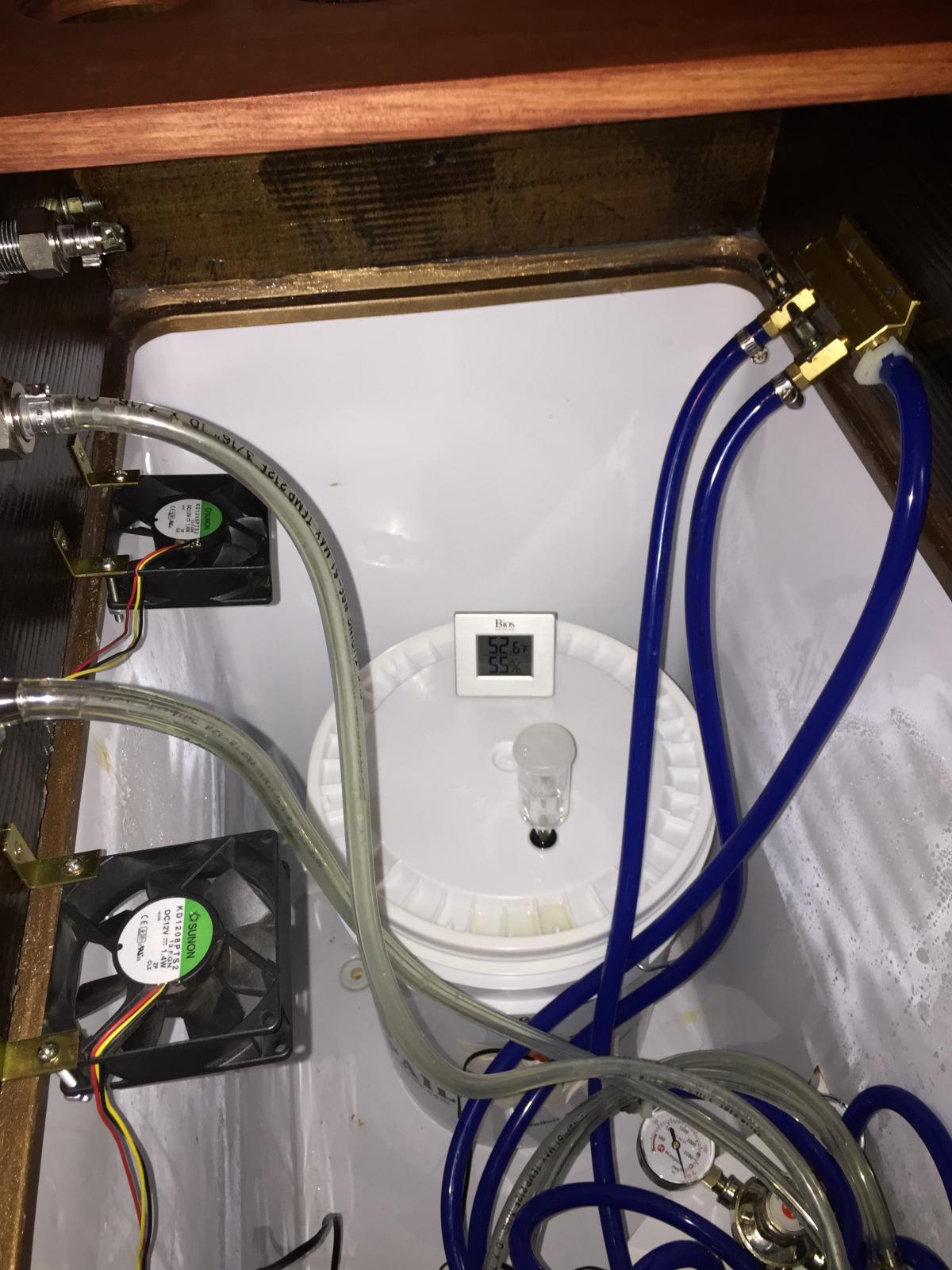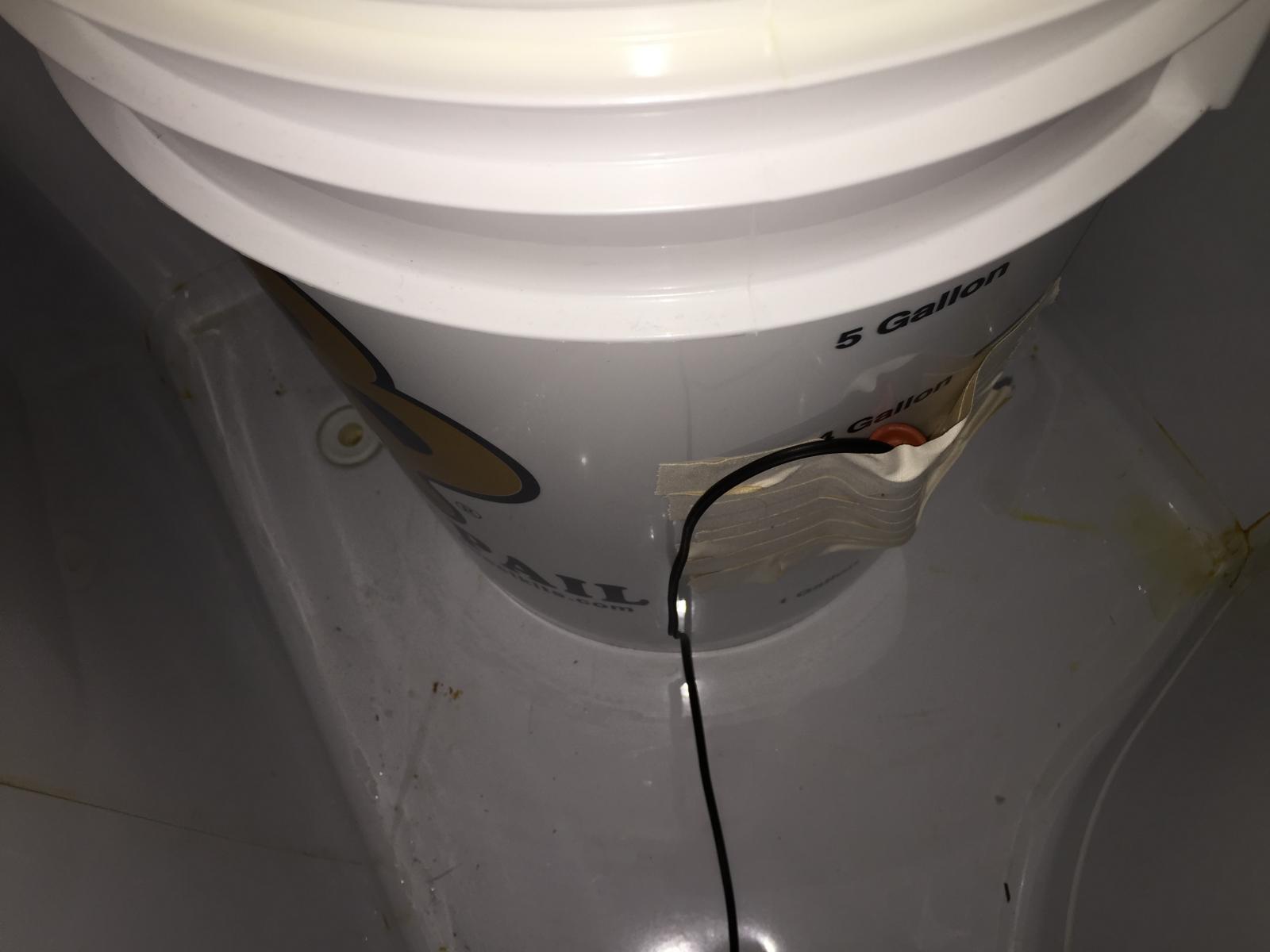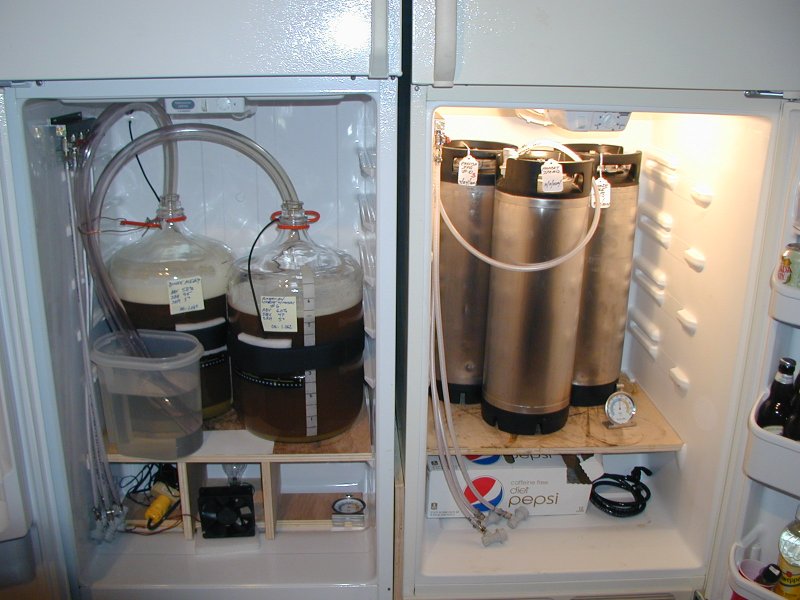I need some opinions on best practice fermentation.
Situation: I am fermenting 5 gal of a IIPA (OG 1.097). I did a 1 Liter starter with WLP001 and it has been 24 hours with a huge amount of bubbling and activity (so much so, it blew the airlock 3 times). I would like to ferment it for 5-7 days in primary at 68-70 degrees Fahrenheit (20C).
I have it in a chest freezer in which I converted with an STC-1000. I set the STC to 20 C and put the probe in a small blood lab vial (I work at a hospital) filled with water and taped it to the side of the fermenting bucket. What I am seeing is after the compressor kicks on at 20.5C, the probe temp will rise to about 20.8C before making its way back down and after the compressor shuts off it will go as low as 19.8C. I have an ambient thermometer on top of the FV that will read as low as 9.5C (49.1 F) and as high as 15.1C (59.2 F). Im just worried about the wort getting to low with the ambient reading so low. As I understand it, 5 gal fermenting wort has a larger thermal mass and creates heat as it ferments, so regardless of the ambient temp in the freezer the probe will read close to the wort temp? correct me if Im wrong.



Situation: I am fermenting 5 gal of a IIPA (OG 1.097). I did a 1 Liter starter with WLP001 and it has been 24 hours with a huge amount of bubbling and activity (so much so, it blew the airlock 3 times). I would like to ferment it for 5-7 days in primary at 68-70 degrees Fahrenheit (20C).
I have it in a chest freezer in which I converted with an STC-1000. I set the STC to 20 C and put the probe in a small blood lab vial (I work at a hospital) filled with water and taped it to the side of the fermenting bucket. What I am seeing is after the compressor kicks on at 20.5C, the probe temp will rise to about 20.8C before making its way back down and after the compressor shuts off it will go as low as 19.8C. I have an ambient thermometer on top of the FV that will read as low as 9.5C (49.1 F) and as high as 15.1C (59.2 F). Im just worried about the wort getting to low with the ambient reading so low. As I understand it, 5 gal fermenting wort has a larger thermal mass and creates heat as it ferments, so regardless of the ambient temp in the freezer the probe will read close to the wort temp? correct me if Im wrong.





















































![Craft A Brew - Safale S-04 Dry Yeast - Fermentis - English Ale Dry Yeast - For English and American Ales and Hard Apple Ciders - Ingredients for Home Brewing - Beer Making Supplies - [1 Pack]](https://m.media-amazon.com/images/I/41fVGNh6JfL._SL500_.jpg)









